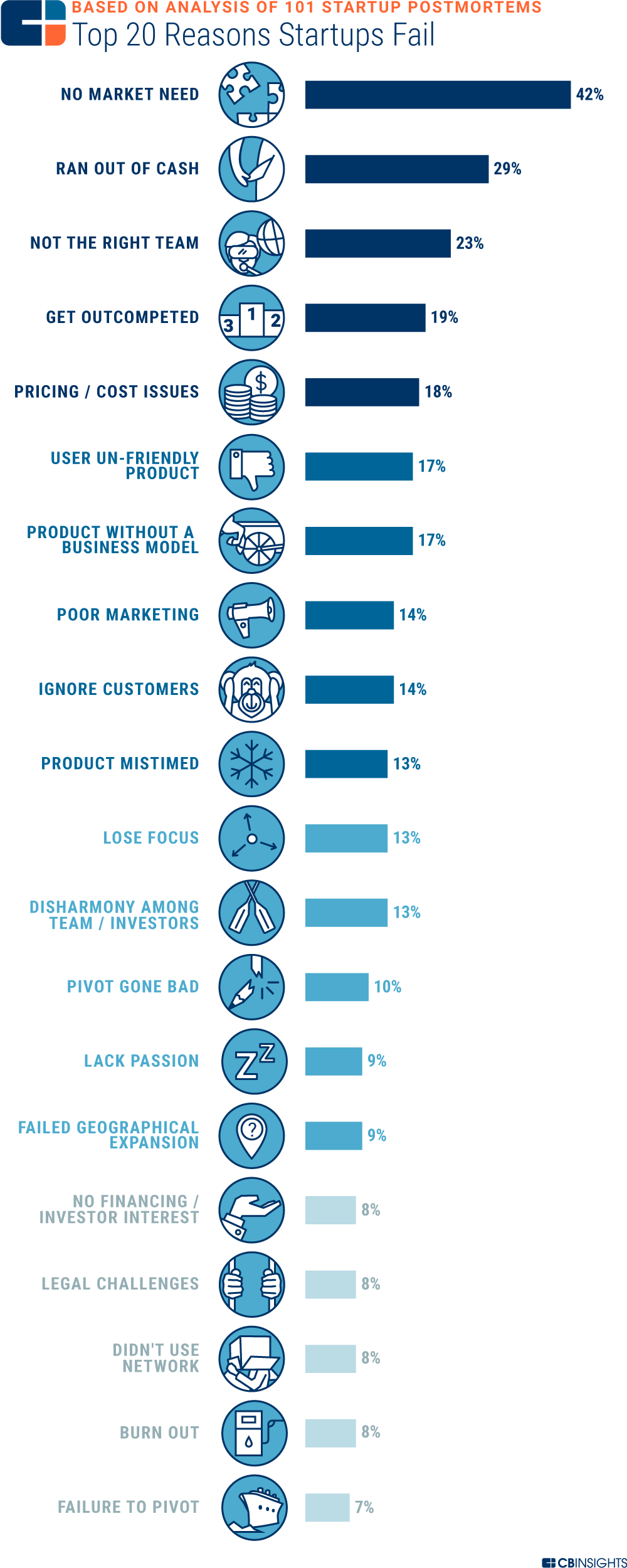The #1 Reason Startups Fail
It’s something I have witnessed first hand through my consulting experience, anecdotally by being in the startup ecosystem, and backed up with data from CB Insights (Crunch Base). It makes sense that this the biggest issue because it’s also the most overlooked part of starting a company. Don’t get me wrong, many nail it. But the problem is that the majority of would-be founders are oblivious to the real need for market validation. Testing is the answer.
Most startups fail due to “no market need”. Meaning not enough people are interested in your idea to begin with. See the full breakdown below.
It looks like a paradox at first: the audacity required to start a new company, paired with the humility to check your assumptions along the way. Most people just push their vision forward, without consulting anyone except maybe friends and family. Who although are well-meaning with their encouragement, are probably not subject matter experts in whatever realm their friend is looking to dive headfirst into.
The reality is that you must build your new vision in concert with those who you hope to support - your audience. In business, we’re in the service of our customers. You need to, and should, make a healthy profit. But you won’t even get off to a good start unless you craft your offering to match your intended audience.
Feedback is the way we iterate to greatness. There’s a whole realm of Customer Development, which I equate to the Retention stage of the Pirate Metrics sales funnel. This retention stage might be the most important part of the customer journey because it’s where the dialogue between visionary and consumer takes place. Only together will they both make progress toward a truly viable solution. Win-win is the only way.
Through testing, we're able to validate our assumptions. It’s what one should do at the onset of any new business and during the initial phase of finding product-market fit. Realistically, during this early stage, you need to be spending 50% of your time on distribution efforts (listening to your customer) and 50% on product development (applying their feedback). Only once you find product-market fit can you relax this ratio to focus more on product development. But don’t ever completely cut off the conversation with your customers.

